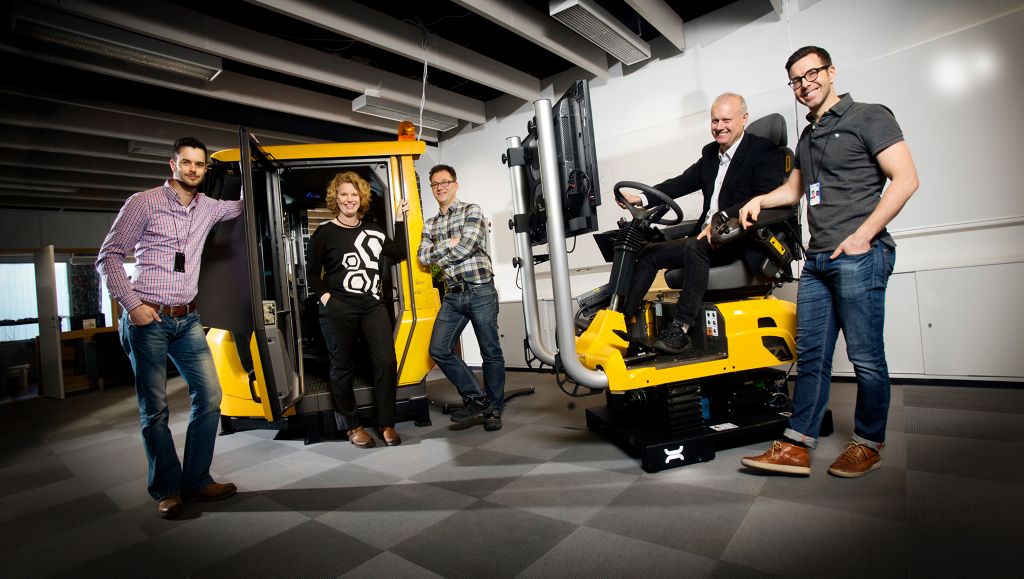Electric teamwork for the future


The Electric Site project was presented at Volvo CE’s large Construction Climate Challenge conference, a suitable location as the new technology appears promising from a climate perspective. If the machines were powered by electricity instead of diesel, it is estimated that carbon emissions could be reduced by as much as 95 per cent for work in quarries. The customers’ production costs could also be cut by 25 per cent, mainly due to the increased efficiency of electric machines and higher overall operational process efficiency.
“This industry is often somewhat conservative, but we are facing what can only be described as a paradigm shift with more sustainable technology and a new way of thinking,” says Jenny Elfsberg, Director Emerging Technologies at Volvo CE.
Since the presentation of the project, the team in Eskilstuna, Sweden, has welcomed a large number of interested visitors, including the Swedish Energy Minister and the Director General of the Swedish Energy Agency. The Energy Agency is involved on a large scale and is also contributing a substantial part of the financing.
“We are going to see some extremely rapid changes over the next five to six years, not least when it comes to automation. We are therefore partnering with Volvo CE on a number of projects. This is important for the whole of society,” says Magnus Henke, transport supervisor at the Swedish Energy Agency.
Another partner is the construction and aggregates company, Skanska, which has been part of the project group since the very start. This, too, differs from the way work of this kind is normally organised, according to technical project leader, Erik Uhlin, and chief engineer, Joakim Unnebäck.
“We have found an open, effective way of working. It’s incredibly important that we share a feeling of mutual trust,” says Erik Uhlin.
Joakim Unnebäck underlines the benefits of constantly exchanging thoughts and ideas with the customer during development. This does not simply save time; it also provides important insights into how products are actually used.
Uwe Müller, the Chief Project Manager for Electric Site, believes that working with the customer from the development stage is the way things will be organised in the future, as a natural result of shifting focus from selling yellow machinery to offering a solution to the customer’s problems.
“Close cooperation and shared values will be increasingly important and Electric Site is a good example. We are working together to develop technology that is safe, environmentally friendly, efficient and commercially viable, for us and for the customer,” says Uwe Müller.
Andreas Sunesson, head of the Division of Fleet and Technology at Skanska Aggregates, is also very satisfied with the partnership. To him, one of the most important prerequisites is the fact that Skanska and Volvo CE share the same values, not least when it comes to the environment and safety.
Electrification represents a major change that can really improve efficiency.
“The principal challenge is to change our way of thinking. I believe that companies like Skanska and Volvo CE can learn a great deal from one another and really develop together,” says Andreas Sunesson.
WHAT IS ELECTRIC SITE?
The project involves the electrification of a complete work step in a quarry – from blast pile to secondary crusher.
Electric Site could give a: 95% reduction in carbon emissions and 25% reduction in production costs. (cost per tonne) to the customer.
(Provided that the electricity is produced in a carbon-neutral manner.)